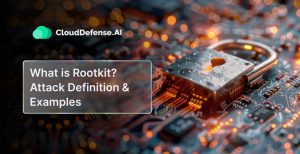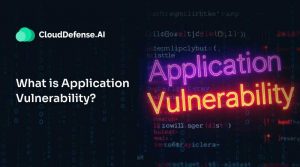Cyber threats are becoming harder to defend against than ever. Companies deploy a number of tools and technologies to protect themselves, and in them, the Security Operations Center (SOC) is considered to be the first line of defense.
By combining skilled teams and advanced tools, a well-run SOC detects and stops attacks before they cause damage. With cyber risks growing every day, having a strong SOC isn’t an option anymore—it has become a necessity.
But how do you take your SOC to the next level and stay ahead of modern threats? Here are five Security Operations Center (SOC) best practices to strengthen your defenses and keep your organization secure.
What is a SOC? Security Operations Center Explained
A Security Operations Center (SOC) is the nerve center of an organization’s cybersecurity efforts.
It proactively monitors and defends digital assets by identifying, analyzing, and responding to threats in real-time. SOC teams conduct asset discovery to understand the technology field and ensure complete coverage.
They use continuous behavioral monitoring to detect anomalies, log activities for root-cause analysis, and prioritize security incidents based on severity. When breaches occur, the SOC executes incident response to minimize damage and restore operations swiftly.
Additionally, it ensures compliance with regulatory standards, reducing legal risks and strengthening the organization’s overall security posture.
How Does the SOC Work?
A Security Operations Center (SOC) serves as the frontline defense against cyber threats, operating through either an in-house or managed model.
In an in-house SOC, organizations build and maintain their security teams and infrastructure, providing round-the-clock monitoring and threat response. This approach requires hiring skilled personnel and investing in tools to detect, analyze, and mitigate potential risks effectively.
Alternatively, the managed SOC model allows organizations to outsource their security operations to third-party providers. These providers offer managed detection and response (MDR) services, employing advanced technologies and expert teams to monitor IT environments, detect threats, and respond swiftly—without requiring internal resource allocation.
Regardless of the model, the SOC’s core mission remains the same: continuously monitoring IT systems, analyzing alerts, proactively hunting threats, and responding to intrusions. By strengthening an organization’s cybersecurity defenses, the SOC ensures operational resilience and minimizes the risk of cyberattacks.
Security Operations Center Best Practices
A well-functioning Security Operations Center (SOC) is critical for organizations aiming to protect their digital assets and maintain compliance. Whether an SOC is in-house or outsourced, implementing the following best practices can significantly enhance its effectiveness and efficiency.
Align Strategy with Business Goals
A successful SOC must align its objectives with the broader goals of the organization. Security cannot exist in isolation; it must support and enhance business operations rather than hinder them. Misalignment often leads to overlooked policies or insufficient funding for security initiatives.
- Understand Business Priorities: Begin by collaborating with key stakeholders to identify what matters most to the organization. This ensures security measures protect what’s critical while minimizing disruptions.
- Perform Risk Assessments: Assess risks by identifying critical assets and evaluating the potential impacts of cyber threats. This helps the SOC prioritize its efforts where they matter most.
- Define Metrics and KPIs: Develop measurable indicators that showcase the SOC’s value. For instance, metrics like Mean Time to Detect (MTTD) and Mean Time to Respond (MTTR) directly reflect operational efficiency.
- Simplify Processes: Establish workflows and incident response plans that maintain business continuity even during a security event.
Establish a Technology Tools Stack
The tools used by a SOC play a pivotal role in its efficiency and scalability. However, an uncoordinated or bloated tech stack can lead to inefficiencies, operational silos, and wasted resources.
- Focus on Integration: Choose platforms that consolidate multiple functionalities, such as Security Information and Event Management (SIEM) systems and Extended Detection and Response (XDR) tools. This reduces complexity and improves coordination.
- Avoid Overlapping Tools: Conduct regular audits of your tech stack to eliminate redundancies. Each tool should serve a specific purpose and contribute to the overall security strategy.
- Prioritize Scalability: Invest in tools that can grow with your organization’s needs. The SOC’s infrastructure should handle increasing data loads and adapt to new technologies like cloud environments and IoT.
Use Threat Intelligence and Machine Learning
A modern SOC must go beyond reactive measures and proactively anticipate potential threats. Using threat intelligence and machine learning (ML) is key to staying ahead of adversaries.
- Integrate Threat Intelligence: Use threat feeds and analytics to identify known vulnerabilities, emerging threats, and potential attack vectors. This ensures the SOC remains proactive.
- Deploy Machine Learning: ML algorithms can process vast amounts of data to uncover patterns and anomalies that indicate suspicious activities. This significantly improves detection accuracy.
- Automate Responses: Implement automated response mechanisms for routine incidents. For example, isolating a compromised endpoint can be automated to reduce response times while reserving human intervention for complex issues.
Ensure Visibility Across the Network
End-to-end visibility is essential for detecting and mitigating threats across increasingly distributed and complex environments. Without it, blind spots can lead to significant vulnerabilities.
- Centralized Monitoring: Use centralized dashboards to consolidate data from on-premises systems, cloud platforms, and endpoints. This ensures a cohesive view of the entire network.
- Cross-Platform Compatibility: Ensure that security tools are compatible with hybrid environments, including public clouds, private clouds, and traditional data centers.
- Adopt Zero Trust Principles: Implement policies where access is granted based on verified identity and behavior rather than assumptions. This reduces the risk of lateral movement within the network.
Continuously Monitor the Network
Cyber threats don’t operate on a 9-to-5 schedule, and neither should your SOC. Continuous monitoring is essential for identifying and addressing threats in real time.
- 24×7 Coverage: Establish a framework for uninterrupted monitoring. This could involve dedicated shifts, automated tools, or using managed services providers (MSPs) for after-hours coverage.
- Real-Time Alerts: Equip the SOC with tools that deliver immediate alerts for unusual activity. This allows the team to respond swiftly, minimizing potential damage.
- Conduct Regular Drills: Periodically simulate attacks to test the SOC’s readiness. These exercises reveal gaps in coverage and help improve response strategies.
By following these detailed best practices, organizations can build an SOC that not only meets today’s challenges but also adapts to the cybersecurity requirements of the industry. A proactive, well-aligned, and continuously improving SOC is an irreplaceable asset for any organization.
Final Words
Incorporating SOC best practices into operations isn’t just about strengthening cybersecurity defenses; it’s about aligning with broader business goals. When SOC strategies match business objectives, cybersecurity becomes an essential part of overall success.
By using tech stacks, blending automation with human expertise, and keeping a constant eye on networks, SOCs become agile defenders against threats. This approach boosts security, lowers risks, and protects vital assets, ensuring long-term business prosperity. We hope you have received critical insight from this article, together with the Security Operations Center best practices that we have outlined for you.







